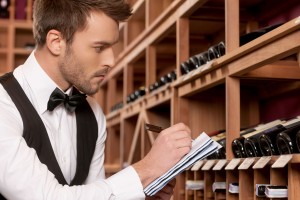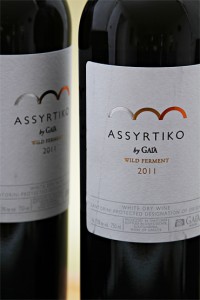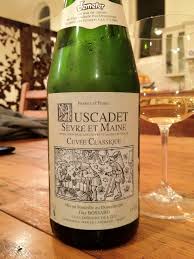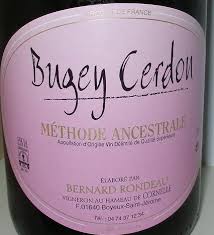 Today we have a guest post from Houston Wine Educator James Barlow, CS, CWE. James shares with us how its a great time to be in the wine business!
Today we have a guest post from Houston Wine Educator James Barlow, CS, CWE. James shares with us how its a great time to be in the wine business!
It is a great time to be in the wine industry in the United States. American consumers are more educated and adventurous than they have ever been. There is now a willingness to step outside the box when buying wine which shows a changing of the guard is in progress. The newer consumers are starting to seek out ‘geek wines’ rather than buying the standard Cabernet, Chardonnay, or Merlot.
As a Wine Professional, it is my job to guide the customer into a bottle that will not only give them pleasure, but also expand their palate and open up their eyes to new experiences with wine. I have found that this is becoming easier because customers are now seeking me out and asking the question that every wine geek loves to hear: Sell me a wine that I have never tried. When I hear these lovely words, inevitably, my mind starts racing with varietals that are off the beaten path. These are some of the wines that are starting to gain traction in the US market that consumers and sommeliers alike are starting to ‘Geek Out’ on.
 One such varietal is Assyrtiko. This eclectic varietal is catching on like wild fire in the wine community. It is a dry to bone dry grape that has become famous for its smoky characteristics from the volcanic Island of Santorini. The wine is quite versatile as it may be oaked or (more often) un-oaked. Assyrtiko has been called the most terroir driven wine in the world. It has bracing acidity and with citrus lemon lime and yellow apples flavors that are compounded by earthy minerals such as ash, flint, lava and gun smoke. Warmer vintages allow for more stone fruits to come forward in the flavor profile. The finish on the wine is typically clean and somewhat haunting. It is becoming popular due to its fuller body which allows the wine to pair well with numerous dishes.
One such varietal is Assyrtiko. This eclectic varietal is catching on like wild fire in the wine community. It is a dry to bone dry grape that has become famous for its smoky characteristics from the volcanic Island of Santorini. The wine is quite versatile as it may be oaked or (more often) un-oaked. Assyrtiko has been called the most terroir driven wine in the world. It has bracing acidity and with citrus lemon lime and yellow apples flavors that are compounded by earthy minerals such as ash, flint, lava and gun smoke. Warmer vintages allow for more stone fruits to come forward in the flavor profile. The finish on the wine is typically clean and somewhat haunting. It is becoming popular due to its fuller body which allows the wine to pair well with numerous dishes.
Sauvignon Blanc drinkers are also looking for something new, which gives me an opportunity to show off some obscure grapes that have similar characteristics. Sylvaner (Silvaner) is one such grape that is starting to become popular from Germany, Austria, or France. In fact, Silvaner has gained so much traction that in 2006 Alsace gave the varietal Grand Cru status in the vineyard of Zotzenberg. I had the pleasure of trying several versions of this varietal while traveling through the Pfalz this past summer. I was stunned at the beauty and terroir that these wines exuded. The varietal is usually un-oaked and high in acid, yet the grape is fairly neutral so the characteristics of the soil really sing in the ensuing wine. In Germany, Weingut Hans Wirsching Silvaner from Franken is producing stellar Silvaner that is worth seeking out. This zingy white is best known for being grown in the Rheinhessen or the Palatinate (Pfalz). While Austria is most likely its original home, only minimal acreage is devoted to the grape now, but is high quality and deliciously dry when one can find it.
 Light, refreshingly whites are becoming the trend, leaving the heavy, oaky Chardonnays in the dust. Melon de Bourgogne is one such varietal that is famously known to be produced in the region of Muscadet in the Loire Valley on the coast of France facing the Atlantic Ocean. It can really thrive in the schistous soils of the region. The grape is rarely blended with other varietals thus keeping the purity of the flavor profile. One process used to enhance complexity in Muscadet is ‘Sur Lie’ aging. This process is implemented by leaving the wine on the dead yeast cells which gives the wine a nutty, creamy complexity that softens the acids, adds richness and often just a hint of sparkle to the finished wine. Over 80% of all production comes from Muscadet-Sèvre et Maine; these wines are meant for early consumption and pair perfectly with light seafood dishes.
Light, refreshingly whites are becoming the trend, leaving the heavy, oaky Chardonnays in the dust. Melon de Bourgogne is one such varietal that is famously known to be produced in the region of Muscadet in the Loire Valley on the coast of France facing the Atlantic Ocean. It can really thrive in the schistous soils of the region. The grape is rarely blended with other varietals thus keeping the purity of the flavor profile. One process used to enhance complexity in Muscadet is ‘Sur Lie’ aging. This process is implemented by leaving the wine on the dead yeast cells which gives the wine a nutty, creamy complexity that softens the acids, adds richness and often just a hint of sparkle to the finished wine. Over 80% of all production comes from Muscadet-Sèvre et Maine; these wines are meant for early consumption and pair perfectly with light seafood dishes.
Rose’s sales are exploding, yet some drinkers still prefer red wines. Grignolino, which means grape seeds, is an Italian red grape that can often be a bridge between the two styles. One can find Grignolino in California (Heitz makes an excellent Rose), but it is primarily found in the Piedmont region of Italy. The wine is pale red and borders on Rose in color. It has medium to high acidity and light to medium tannins. Its profile shows sour bing cherries and raspberry with hints of minerality throughout the core. It is meant to be drunk young and slightly chilled, which is perfect for the hot summer weather. I open a bottle of Grignolino every Thanksgiving because it pairs perfectly with fowl. A top producer is Marchesi Incisa Della Rocchetta.
 Several geeky red wines are now coming into the spotlight. I have been quite surprised and ecstatic to see interest in the lightly sweet sparkling wines of Bugey Cerdon. Bugey Cerdon is fully sparkling and made mostly from Gamay (Beaujolais) and Poulsard. The wine is produced Methode Ancestrale which skips the disgorgement step and allows the wine to naturally finish fermentation in the bottle. This method typically will have residual sugars left over. Bugey Cerdon pairs wonderfully with softer chocolates or fresh fruits. Bottex is a small producer that is making high quality wine from Savoie.
Several geeky red wines are now coming into the spotlight. I have been quite surprised and ecstatic to see interest in the lightly sweet sparkling wines of Bugey Cerdon. Bugey Cerdon is fully sparkling and made mostly from Gamay (Beaujolais) and Poulsard. The wine is produced Methode Ancestrale which skips the disgorgement step and allows the wine to naturally finish fermentation in the bottle. This method typically will have residual sugars left over. Bugey Cerdon pairs wonderfully with softer chocolates or fresh fruits. Bottex is a small producer that is making high quality wine from Savoie.
Wine Professionals have found an alternative to the high priced reds of Burgundy with Spätburgunder (Pinot Noir) from Germany. Burgundy has had several very high quality vintages, yet dangerously low yield in the past several years. This has allowed Spätburgunder to come to the fore front in the world of Pinot Noir. The Pfalz and Rheingau are hot spots where the varietal thrives. Spätburgunder is usually lightly oaked or aged in a neutral vessel with excellent acidity and light tannins. The ensuing wines are deliciously vibrant in youth. Pinot Noir from Germany has proven that it can rival some of the best in the world. Knipser is one of my favorite producers with their Blauer Spätburgunder.
‘Geeky’ varietals are becoming the trend for wine drinkers to seek out. It has become hip to be a ‘wine geek’ with knowledge about what is in the bottle. The American wine drinkers are becoming very savvy shoppers. I find that it is much easier to steer a potential buyer into something other than the standard varietal and, more importantly, they are coming back for more. Cheers to the future of the American Wine Geek!
Our guest author, James Barlow, CS, CWE, is a wine director of over 6,000 wines labels for a store owned by Spec’s Fine Wines and Liquors in Houston, Texas. He is also the author of the widely recognized wine blog thewineepicure.com. James is also a recent recipient of the CWE Certification (Congratulations, James!) and as such has taken on the duty of teaching the Certified Specialist of Wine course to fellow employees in hopes of having the best educated staff in the state of Texas. Way to go, James!
Click here to return to the SWE Homepage.